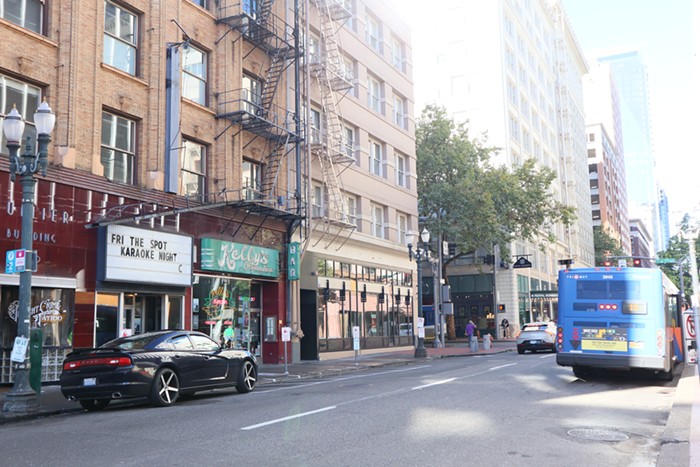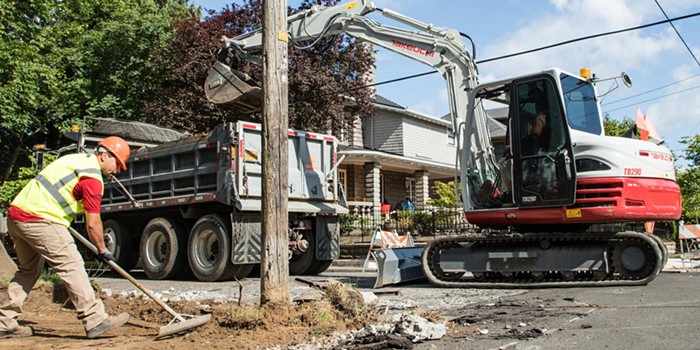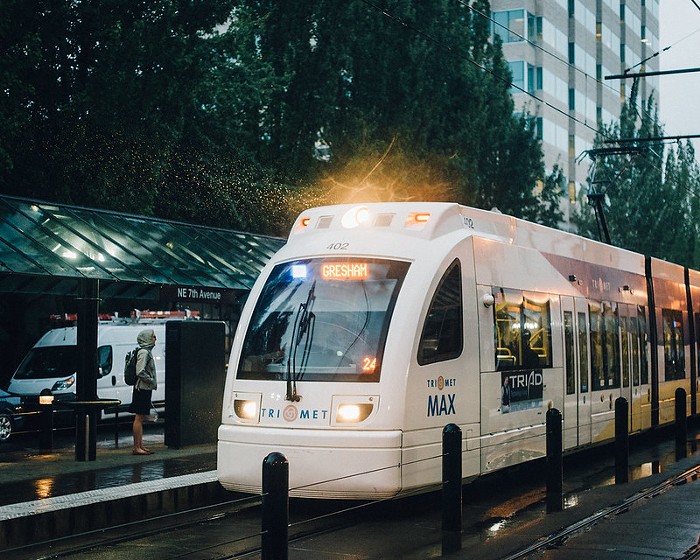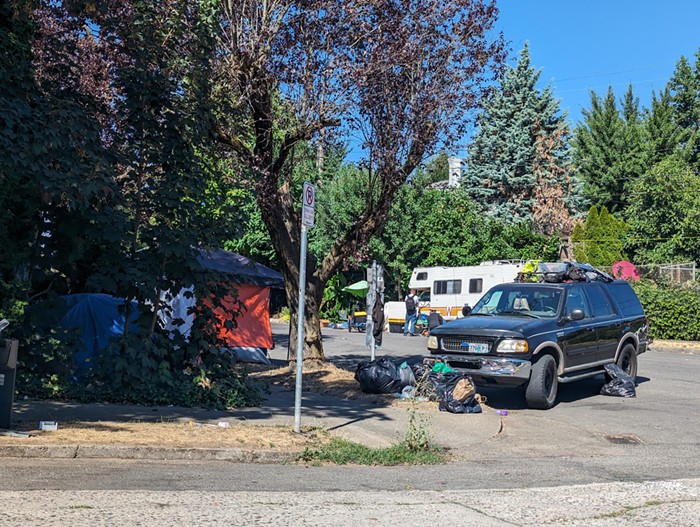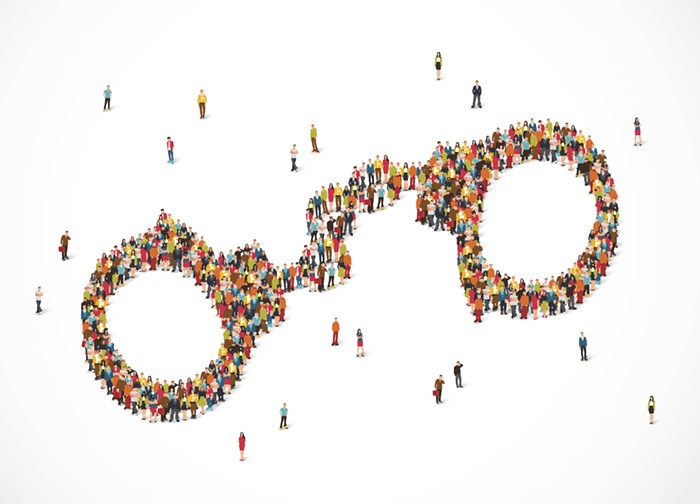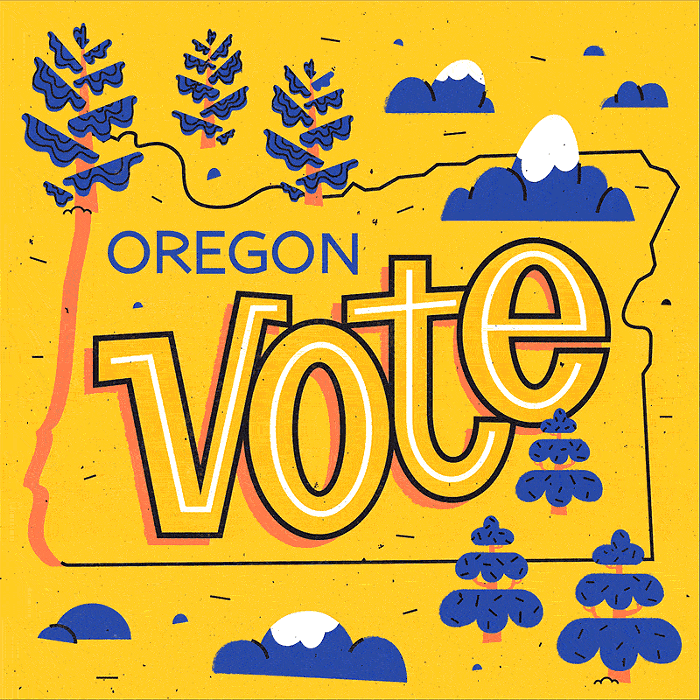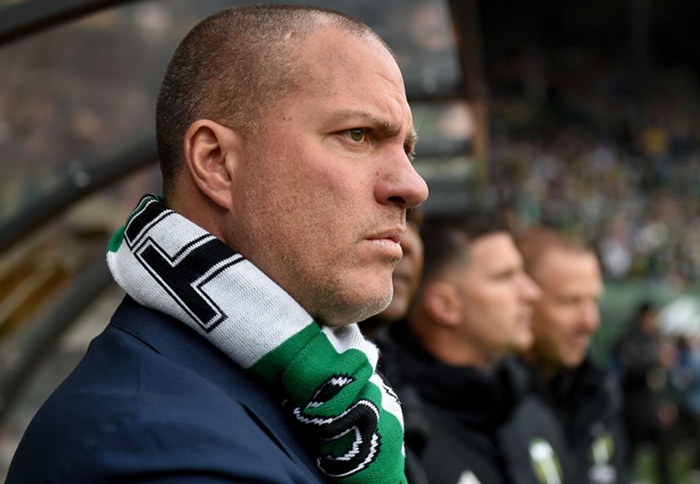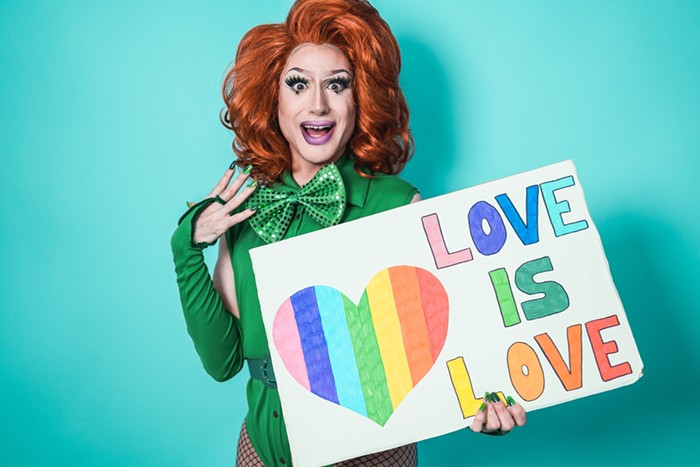
Two tense demonstrations against police violence in Portland ended in flames and assaults by law enforcement Saturday, as the nation watched.
Saturday marked the 51st day that Portlanders took to the streets to decry police brutality after the death of George Floyd by Minneapolis police officers on May 25. The protests have metamorphosed over the past weeks, with a variety of organizers leading nightly demonstrations and marches—some with an emphasis on non-violence, others not. But nearly all of them have been met with violence at the hands of police.
Since early July, the Portland and Multnomah County officers who traditionally responded to these events have been supplemented with federal police—officers specifically deployed to Portland by the White House to safeguard Portland federal buildings. Few of these federal officers with the Department of Homeland Security (DHS) are trained in protest response and crowd control, instead relying on tactics acquired while responding to drug trafficking raids as Border Patrol agents. Unlike the local officers, federal police aren't beholden to legislative and legal restrictions on use of force against protesters, allowing them to shoot copious amounts of tear gas and impact munitions into crowds in the hundreds without warning. These officers have also been documented using unmarked vehicles to grab protesters off the streets and detain them without proof of probable cause—actions that prompted Oregon Attorney General Ellen Rosenblum to file a civil rights lawsuit against DHS and other federal agencies late Friday.
It's the feds' arrival in Portland that's attracted national attention, with many seeing officers' heavy-handed tactics as a way for Donald Trump to improve his reelection chances in November.
Those tactics were on display Saturday evening.
The evening featured two rallies: One originating in North Portland's Peninsula Park, the other in front of the Mark Hatfield Federal Courthouse in downtown Portland (where most of the city's nightly protests originated).
The downtown event began with medical professional in doctor's coats speaking out against the harms of tear gas, police munitions, and systemic racism on a public health. Not long after, they were joined by a group of "Moms Against Police Brutality" who linked arms and stood facing the federal courthouse from SW Main and 3rd.
A crowd of about 400 has now occupied both SW 3rd and SW Main.
The moms are chanting, “Feds stay clear! Moms are here!” at the federal courthouse.
All three fences are still up. pic.twitter.com/jhJ09NUxGW
— Lindsey Smith (she/her) (@LindseyPSmith7) July 19, 2020
The crowd size soon grew to 400. As more joined this protest, several people began dismantling a fence that the city had erected around the adjacent Chapman and Lownsdale squares. According to the Portland Police Bureau (PPB), these fences had been put up to allow city staff to clean up the bathrooms and graffitied statues inside. These public parks have been the hub of demonstrations for more than 50 days. People also began dismantling a separate fence that federal officers had placed around the federal courthouse, and using parts of the fence to block the building's front entrance.
That's when federal police, dressed in camouflage military fatigues, emerged from the courthouse. Instead of arresting the individuals breaking the law by tampering with the building, officers shot tear gas canisters and flash bang grenades indiscriminately into the crowd. During this melee, officers also began using their batons to force people out of the street.
Here are a few clips, taking by Portland journalists, that encapsulates this scene:
Another tear gas attack. Federal police throw an explosive at a person wearing a white coat and carrying a Red Cross sign. pic.twitter.com/FxymOp7en1
— Lindsey Smith (she/her) (@LindseyPSmith7) July 19, 2020
Protestors are dealing with the effects of tear gas, coughing and temporary pain in the eyes pic.twitter.com/vu5ehOEEKk
— Sergio Olmos (@MrOlmos) July 19, 2020
Federal police strike protester with baton, use pepper spray and tear gas outside courthouse in Portland pic.twitter.com/VX2xTVaaYq
— Zane Sparling (@PDXzane) July 19, 2020
Meanwhile, the group gathered in North Portland marched to PPB's North Precinct, and then headed to the N Lombard headquarters of the Portland Police Association (PPA)—PPB's union for rank-and-file officers. This was the third time during the past weeks of demonstrations that protesters marched to PPA.
Not along after arriving at the office building at 10:30 pm, several people had moved dumpsters to block traffic on N Lombard—and some began lighting the dumpsters' contents on fire. Minutes later, and PPB officers on the scene announced to the crowd that the incident had become a "riot" (an announcement PPB must legally make before using tear gas on protesters). Soon, people had removed the plywood covering PPA's glass front door. According to independent journalist Tuck Woodstock, that's when people began smashing in the door with a flagpole. After breaking in to the building, someone started a fire in the office's front room.
PPA on fire. Riot declared. Sirens coming from the west. Crowd moving East. Hearing some kind of shots. pic.twitter.com/mzn594pPBa
— Tuck Woodstock (@tuckwoodstock) July 19, 2020
In response, a line of Portland officers shot tear gas and munitions into the crowd, then sprinted in a pack at the protest group, knocking several down. Portland Mercury reporter Blair Stenvick was shoved to the ground by an officer, despite telling the officer that they were a member of the press and wearing a clear press badge (this is something a recent court order has explicitly barred Portland police from doing).
Police just cleared the crowd. I was running full speed easy and got pushed from behind by a PPB officer. Fortunately I just got scraped. pic.twitter.com/zoKmIEUIvS
— Blair Stenvick (@BlairStenvick) July 19, 2020
Portland police continued to rush at protesters as they attempted to leave the darkened residential area, leaving several members of the public with serious injuries. Woodstock captured several of these assaults on camera:
Second bull rush. Protesters tackled. At least one bike confiscated. pic.twitter.com/r5X00K85cN
— Tuck Woodstock (@tuckwoodstock) July 19, 2020
Everyone just chased into the highway. Then bull rushed again. This man was thrown to the ground multiple times and is now bleeding badly from multiple wounds on his face. He is dazed and clearly needs a medic but we are still moving away from police. pic.twitter.com/UznvhVkygp
— Tuck Woodstock (@tuckwoodstock) July 19, 2020
Both demonstrations wrapped up in a flurry of officer violence no later than 2:30 am. Unlike previous nights, the Saturday demonstrations did not a elicit a coordinated response from federal and local police. According to PPB and to reporters' observations, Portland police officers responded solely to the North Portland protest—staying clear of the federal police downtown. PPB has received criticism over the past days for appearing to work collaboratively with the federal officers, despite local officials condemning the actions of the feds. Saturday evening was the first night that PPB didn't allow federal officers to join them in the bureau's command center, PPB said.
This afternoon, PPA will hold a press conference at its headquarters to address the violence. More protests are planned for this evening.

